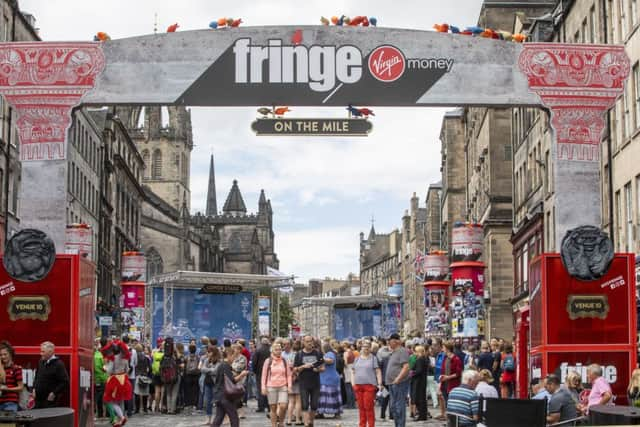Edinburgh Festivals must be spread across city, say council chiefs
Donald Wilson, the culture convener of the local authority, said the move would help tackle several “pinch points” in the heart of the capital where problems have mounted in recent years.
He hinted that the council would use its licensing powers to help encourage a more “even” spread of festival venues in future years .
Advertisement
Hide AdAdvertisement
Hide AdThe plans have emerged months after an official report raised safety concerns about increasing “bottlenecks” of crowds in the Old and New Towns, including parts of Princes Street and the Royal Mile, during peak periods.


Overcrowded pavements, delays to public transport, disruption from buskers and walking tours, the need to deal with heightened terror alerts and the inability of some residents to “get on with normal life” were all cited in the city council dossier.
The local authority is now gathering detailed “footfall” figures at the most congested areas this year which would influence future planning on the city’s hosting of the festivals.
Cllr Wilson cited the example of the revival of Leith Theatre for use by the Edinburgh International Festival this month as an example of the direction it wanted to head in.
Revived in its programme for the first time in 30 years, the building will be playing host to the likes of Mogwai, Karine Polwart, The Jesus and Mary Chain, Anna Meredith, Django Django and Lau.
Cllr Wilson cited the example of the revival of Leith Theatre for use by the Edinburgh International Festival this month as an example of the direction it wanted to head in.
The Edinburgh Festival Fringe Society has already pledged to do more to encourage the development of more venues outwith the city centre. A new five-year blueprint said it would “identify geographical locations that have not typically engaged with the Fringe, and work with local stakeholders to encourage participation from across Scotland, the UK and overseas.”
Advertisement
Hide AdAdvertisement
Hide AdMr Wilson said detailed discussions about the future of the festivals landscape had been triggered by the 70th anniversary of the city’s annual cultural celebration in 2017.
He added: “The legacy, for me, is not looking back at the past 70 years and how it has all gone, it’s actually about where we want to go in the future and how we want to go forward.
“We have to look at the infrastructure of the city in terms of making it sustainable into the future and also the management of the Edinburgh Festival and the impact it has.
“That includes looking at pinch-points in the city where footfall is very high in August and how we widen that out.
“In terms of the big venues, it’s about widening things out, using the whole city and making sure that these particular focuses don’t present a problem in future when other parts of the city would perhaps like to see more festival activity.
“The first thing for us to do is to use licensing to make sure we plan specifically for wider areas. We’re gathering a lot more empirical evidence across the city on the various uses of the streets, including footfall and public transport, particularly at pinch points, so we can take a more evidentially-based approach in future.
“We’re talking about spreading out from these pinch points the excitement and activities of the festivals. We’re at the mercy of the architecture of the lay of the land in the city centre. But there’s more we can do to even things out.
Advertisement
Hide AdAdvertisement
Hide Ad“The evidence we are gathering this month will give us a better position to see the parts of the city that need development during the festivals and the parts of the city that have perhaps developed enough.”
It emerged last week that the council was considering plans to make part of the city “largely traffic free” in future.
Mr Wilson said: “That can only be a good thing for the festivals. Parts of the city centre are already effectively pedestrianised whether people like it or not. The challenge is to ensure the festivals do not get in the way of people going about their daily business.”
Leith Theatre was opened in 1932 as a gift to the people of the area following its controversial amalgamation with Ediinburgh in 1920, but was nearly destroyed in a bomb blast in 1941. It remained closed until 1961 and played host to EIF events in 1988 when it was closed down by the city council due to its declining condition. It was only reopened temporarily last year for another festival, Hidden Door, although the council has committed £1m for a long-term refurbishment.
Mr Wilson added: “Leith Theatre is a very good example of a venue which was very popular in the past and had a real heyday, but then fell into what can only be described as dereliction. There has been a real focus by the council and the festival to bring it back into active use this month.”
